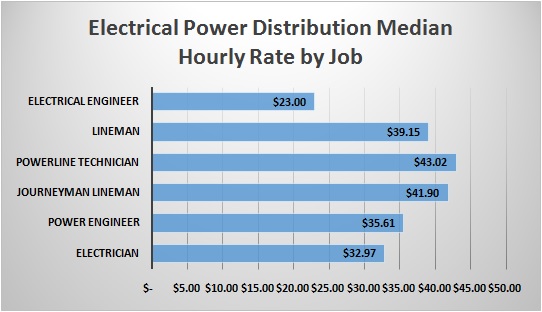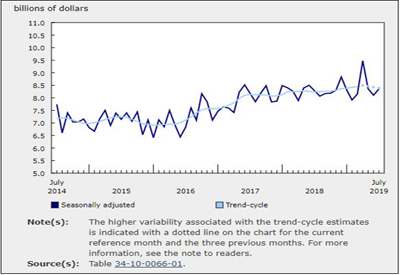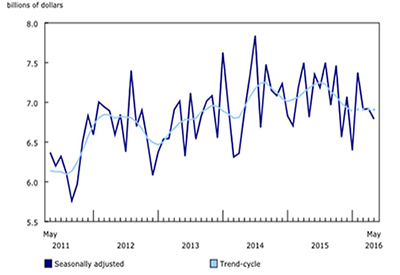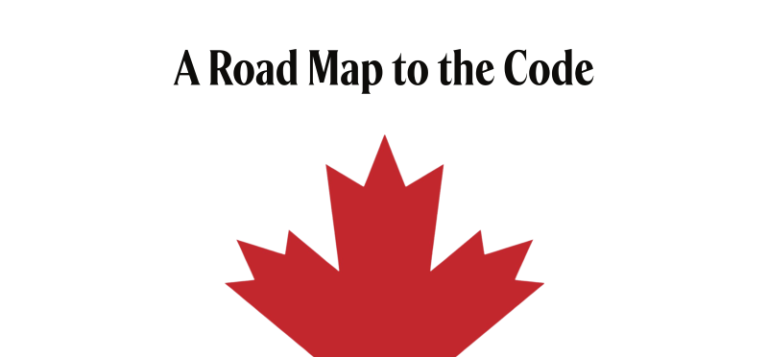Value of Building Permits Declines (Again) in August

Oct 16, 2017
Canadian municipalities issued $7.5 billion worth of building permits in August, down 5.5% from July. This was the second consecutive monthly decrease. Despite these declines, the year-to-date value of building permits (January to August) is up 8.7% compared with the same period in 2016, reflecting a $3.1 billion increase in multi-family dwellings.
The rise of the high rise
Total construction intentions for multi-family dwellings in Canada declined in August, down 6.0% from July. However, the sector has been on an upward trend since 2009.
This upward trend has gradually closed the gap between the value of multi-family dwellings and single-family dwellings. June 2017 was the first month where the value of multi-family dwelling permits for Canada surpassed the value of single-family dwelling permits. Overall, the multi-family component was $294.3 million higher than the single-family component in June, and $8.1 million higher in July.
Montreal and Vancouver are building upwards with multi-family dwellings
The value of multi-family permits in the census metropolitan area (CMA) of Montreal outpaced single-family permits by $278 million in August, the greatest value difference between these two components on record for this CMA. Historically, multi-family permits have posted higher values every month since December 2010.
Similarly, the value of multi-family permits in the CMA of Vancouver topped single-family permits by $236 million in August, and by $425.3 million in July. For both months, construction intentions in the City of Vancouver were the main contributor to the total value of multi-family dwelling permits.
Population density may be driving this development. Results from the 2016 Census show the City of Vancouver as having the highest population density in the country, with a rate of 5,492.6 people per square kilometre. As for the City of Montreal, it ranks near the top, with a population density of 4,662.1 people per square kilometre. With little space to grow out, construction intentions in these municipalities have continued to favour growing up with multi-family dwellings being constructed to fulfill housing needs.
Toronto split between single-family and multi-family dwellings
The Toronto CMA has not followed the multi-family trend to the same extent as Montreal and Vancouver. The value of permits for single-family dwellings outpaced the value of multi-family dwellings in 2015 and 2016. However, based on the year-to-date value for 2017, the multi-family component has led the residential sector with just over 50% of the total value.
Provincial pattern
In British Columbia, the value of permits for multi-family dwellings has outpaced single-family dwellings every year since 2012. So far this year, the multi-family component has exceeded the value of the single-family component by more than $1.6 billion.
In Quebec, the value for multi-family permits has led the residential sector every year since 2013. Thus far, in 2017, Quebec municipalities have issued $3.8 billion worth of multi-family permits, almost $1 billion more than the single-family component.
In contrast, the value of single-family permits in Ontario has led the residential component every year, and for year-to-date 2017, the single-family component has surpassed the multi-family component by $2.1 billion.
Within the Prairie and Atlantic regions, the value of permits for single-family dwellings continues to lead the residential sector each year. In August 2017, the value of single-family dwelling permits led the residential sector by $180.3 million in Alberta, $32.2 million in Saskatchewan and $27.7 million in Manitoba. However, for the current month, the value of multi-family permits in Nova Scotia led the residential sector by $3.3 million, bolstered by activity in the CMA of Halifax.
Source: Statistics Canada, www.statcan.gc.ca/daily-quotidien/171010/dq171010a-eng.htm
















